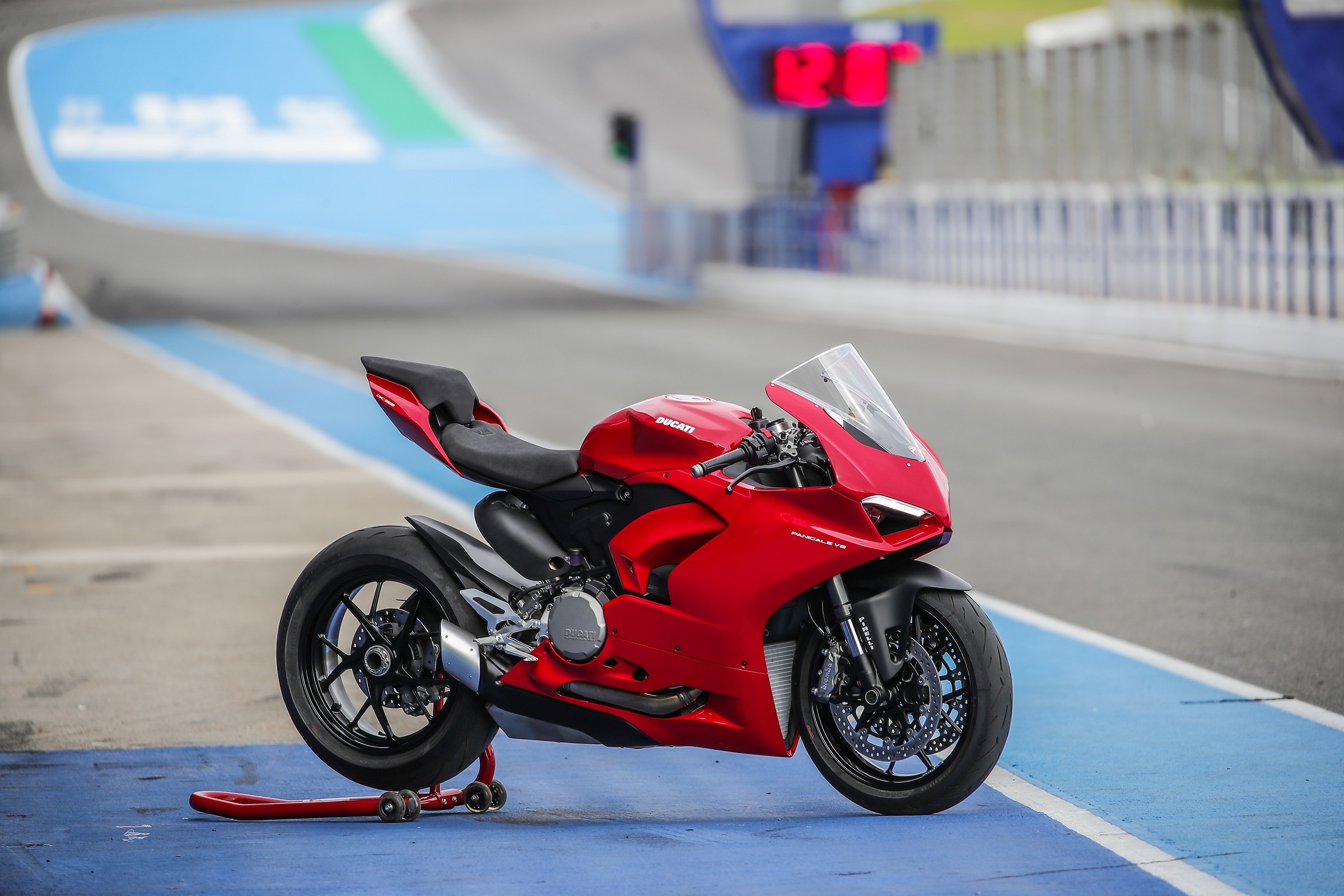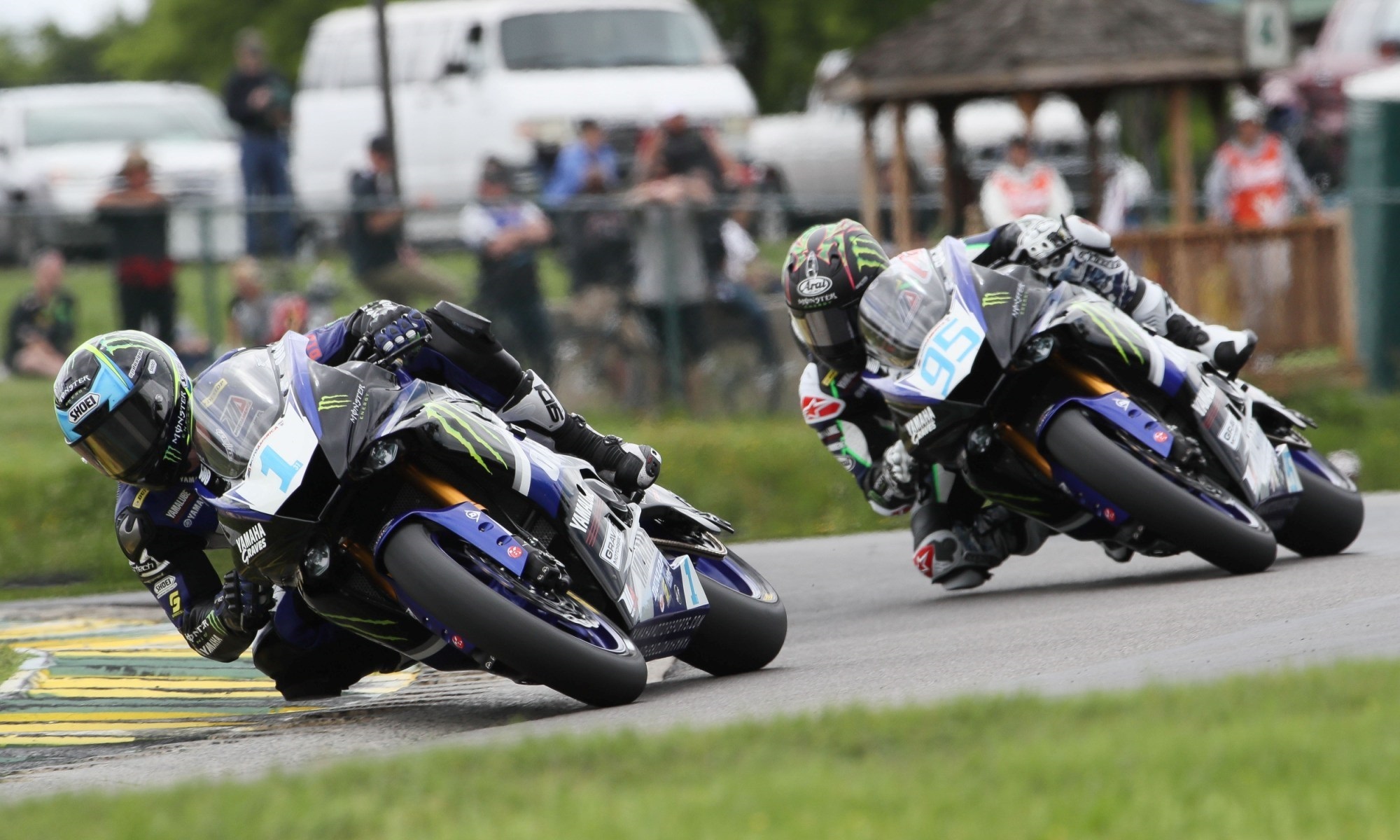To me, one of the more fascinating trends that I’ve watched unfold in the U.S. motorcycle industry over the past two decades has been the decline of the 600 cc supersport class. Other trends are more important, such as young people not following their elders into buying mid-life Harley-Davidson cruisers and young people in general not taking up motorcycling with the enthusiasm of previous generations. But the decline of the 600s has been as dramatic as any tidal shift in U.S. motorcycling.
Twenty years ago, the 600 cc race replicas were among the best selling models in the United States for the Japanese manufacturers. The bikes were updated every two years to maintain competitiveness and the photo of all the contenders lined up on the magazine cover for the annual 600 shootout was a fixture of motorcycle media that was as reliable as any.
At the same time, the 600s were always a source of contention. While some loved them because they were among the most sophisticated high performance two-wheelers the average rider could buy, others hated them and their fizzy, high-strung, uncompromising nature. And they only became more uncompromising as they developed. Competition pushed the manufacturers to cut their supersports’ lap times and the bikes essentially killed themselves through their own success. They became so good at one specialized task — getting around a race track really fast — that they became not very good at all the other kinds of riding someone might want to do, from getting to work or to class or taking a weekend trip.
For some time, it has been easy to predict the 600 cc race replicas would disappear as sales dwindled to insignificant numbers. But they haven’t. Kawasaki tried the approach of making its ZX-6R simpler and less expensive, so it would be more attractive to club racers even if fewer were buying it to ride on the street. To our surprise, Honda brought back the CBR600RR, at least for some markets, even though it won’t be sold in Europe because it can’t meet emissions regulations. But one reason the Japanese manufacturers still make these bikes is because they are such a critical part of racing.
Today’s news may change that, and add one more nail in the coffin of the 600s.

The Ducati Panigale V2, a 959 cc twin, is one of the bikes that will be added to the British Supersport class next year as a test for how World Supersport rules might be modified for 2022. Ducati photo.
Triumph 765 and Ducati Panigale V2 may join Supersport class
The FIM announced today that the British Supersport Series will be a sort of test case next year for changing which bikes are allowed to race in the class, and the idea is that the test will lead to changes in World Supersport in 2022. National series, such as the Supersport class in MotoAmerica, are based on World Supersport rules. So changes starting here have the potential to ripple worldwide and weaken the last argument for keeping the 600 cc fours around.
For a long time, the basic formula for the Supersport class has allowed four-cylinders up to 600 cc (though the 636 cc Kawasaki has generally been homologated, leading to some hard feelings in some cases), triples up to 675 cc and twins up to 750 cc. The obvious problem is that sales of track-focused 600s have dwindled and no one is selling a 675 cc triple or 750 cc twin high performance street bike. The real-world market has moved on, and while Supersport racing remains great on track, production-based racing needs to have ties to the motorcycles people are actually riding. And, more importantly, buying.
The experiment in British Supersport next year will allow the Triumph 765 cc triple and the Ducati 959 cc twin to compete in the class. Presumably, the series will use a balancing formula, like the one in the Supersport 300 World Championship, where motorcycles of different displacements compete. But if it becomes easier and less expensive to be competitive on the larger twins and triples, then the Japanese manufacturers will have one less reason to continue building the 600s. Which might bring the total number of reasons to zero.
That would be a huge change. Except for a few Triumph and MV Agusta triples, World Supersport has been totally a field of Japanese four-cylinders. That has been even more true in the U.S. championship, where every Supersport race since MotoAmerica took over in 2015 has been won by a Japanese four: Yamaha YZF-R6s, Suzuki GSX-R600s and Kawasaki ZX-6Rs.

For four years, the Yamaha YZF-R6 dominated the MotoAmerica Supersport class, winning 60 of 66 races and four titles. Then Yamaha pulled its factory support in the class. In 2020, Yamaha was winless in Supersport. Is the next step that Yamaha will discontinue the R6 entirely? Photo by Brian J. Nelson.
Consider this: From 2015 through 2018, all four MotoAmerica Supersport championships and 60 of 66 races were won on a Yamaha R6. Now, there are credible rumors Yamaha may not even make a street-legal R6 next year, but may instead just sell a track-use bike. That smells like a step toward discontinuing it altogether, and that was something that nobody would have believed possible 15 years ago. By any measure on the track, the R6 is a hugely successful model, one that’s a big part of Yamaha’s identity. But that’s not enough to make a business case for its continued existence.
Myths and truths about Supersports
Despite what some very misguided individuals said, back when these bikes were at their height of popularity, a Supersport-class race replica was never a good choice as a beginner bike. They are actually hard to ride, because it takes skill to keep the engine in its stratospheric power band and those sharp brakes can get you in trouble, too.
After watching and admiring from afar for many years, and purchasing more practical bikes, in 2007 I finally bought a Supersport-class bike for myself: my Triumph Daytona 675, which in some ways is more street-oriented than the Japanese fours. Personally, I describe it this way: I would never want a supersport as my only motorcycle, but as long as I have multiple bikes in the garage, I love having one as part of that lineup. Why? It’s the inevitable result of specialization.
I actually personally experienced the dichotomy yesterday in one ride. It was an unusually warm day for November and I wanted to make sure my parents’ old property in West Virginia was buttoned up for winter and ready to be left unattended for a while. The trip is 99 miles each way, by the direct and boring route, but I’ve mapped a dozen alternatives that let me enjoy some of southeastern Ohio’s curvy roads. The ride back in 70-degree weather was sublime on the Daytona. It is so understressed at even brisk backroads speeds that I always feel like it has plenty of margin in hand. Need to change my line in the corner because of gravel. The bike responds. Need more lean angle? Plenty is available. Need to brake a little harder? No sweat.
Enjoying the autumn colors on a sunny day. The unblemished blue of the sky, the deep bronze of the oak leaves that stubbornly hang on longest, and of course the Tornado Red of the migrating @TriumphAmerica Daytona. Good day for a #motorcycle ride. pic.twitter.com/3xIkXHPcBg
— Lance Oliver (@lancekoliver) November 8, 2020
Then after about 60 miles of great riding, I made the mistake of riding through a popular state forest that draws everyone from hikers to shoppers to leaf peepers on a beautiful weekend day like yesterday. Suddenly I went from empty, curvy two-lanes to a 35 mph conga line of cars inching through what would have been the best riding of the trip. At the slower speeds, the Daytona’s exhaust roasted my right leg, my clutch hand ached, my neck grew sore from the ergonomics (despite my modest modifications). Riding joy transformed to irritation.
When it’s good, a Supersport race replica is very, very good. When it’s not… it can be painful.
If the class eventually disappears, if we make the final step in the journey from dominating the cover of the bestselling issue of the magazine each year to a world with no 600 cc race replicas (and no print magazines, either), I’ll be sad to see the Supersports go.

Great insight
You’re kind, Neale. But I’ll take it!
For prototype racing (MotoGP), having something like a spec class, like Moto2, works fine as a bridge between Moto3 and MotoGP. But for production-based racing (World Superbike), this is a real problem. There’s a huge gap between the World Supersport 300 and World Superbike classes. Both of those classes are solid, because manufacturers are still selling 300 and 400cc sport bikes and everybody has a liter bike, not just the Japanese but also BMW, Ducati, Aprilia. But how do you fill that big gap if nobody’s buying the 600s any more? I don’t think you can base a class on 959 Ducatis and 765 Triumphs. And anyway, isn’t a 959 awful close to a Superbike? Not in outright performance, but in market position. The other bikes in between are great street bikes but not great race bikes. I’m talking about SV650s and MT-07s. So what’s the answer? I don’t know. But Dorna better come up with something to fill that huge gap between a Ninja 400 and Jonny Rea’s ZX-10R.